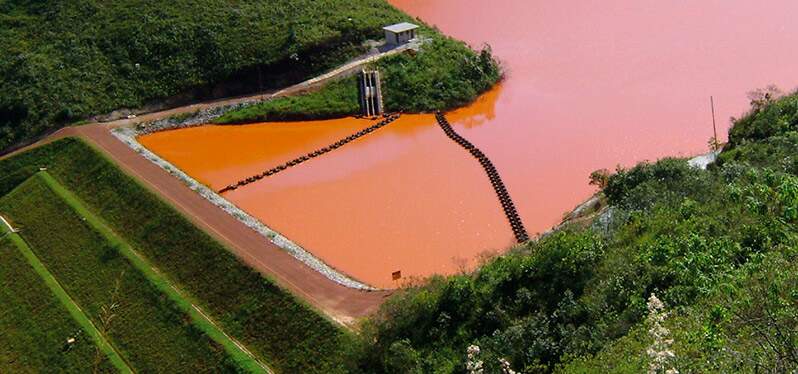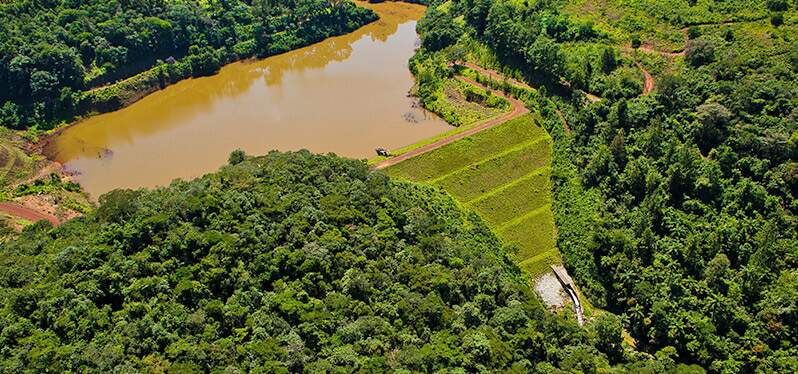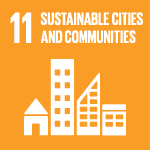Posted in: 09/17/2021
Brazil has recently faced some of the worst dam disasters in its history. In order to avoid more accidents, the new Mining Regulatory Framework brought the modernization of rules and increased safety levels to the sector, in addition to having been appointed as responsible for providing more legal transparency to the segment and establishing stricter measures in relation to possible environmental damage.
In November 2015, one of the biggest dam accidents ever seen in the world occurred in the city of Mariana, Minas Gerais. The failure of the Fundão Dam dumped 39.2 million m³ of tailings into the Gualaxo do Norte River, which then flowed into the Doce River and continued to its mouth in Espírito Santo.
The losses were of various types: 19 human lives, biodiversity, property damage – material or immaterial on multiple scales – and interruption of economic and productive activities. The main hydrographic basin of southeastern Brazil, the Rio Doce basin, was compromised, with the death and contamination of rivers, corals and nurseries of marine life already distant, in the Atlantic Ocean. Indigenous territories and traditional peoples were affected and the city of Bento Rodrigues was buried. Thousands of people were left without access to clean water.
Just over 3 years after this disaster, the country was faced with a new accident: the rupture of the Córrego do Feijão Mine Tailings Dam, in Brumadinho, Minas Gerais, on January 25th, 2019.
The dam was classified as “low risk” and “high associated potential damage”. The rupture, which is one of the biggest humanitarian, environmental and industrial disasters in Brazil, caused the death of 270 people, leaving, even today, 10 missing. It is the biggest work accident in Brazil in terms of loss of human life.
It is important to highlight that Synergia acted promptly in emergency care actions for families impacted by these accidents, through procedures for evacuating areas, registering the impacted population, monitoring resettlement processes, offering psychosocial support to families, among other post-operative actions. -disaster.
The company’s expertise, built up over the years and constant actions to prevent dam disasters and to contain damages in episodes that have already occurred, enabled the accumulation of experiences and strategic knowledge, making it one of the Brazilian companies best suited to elaboration of Emergency Action Plans for Dams (PAEBM).
In the last 50 years, there have been at least 60 dam disasters around the world. In the 21st century alone, in Brazil, 10 ruptures with loss of human life can be cited:
June/2001 >Ore tailings dam in São Sebastião das Águas Claras, Nova Lima (MG), with 5 deaths
June/2004 >Camará Dam in Alagoa Nova (PB), 5 deaths
May/2009 >Algodões hydroelectric dam in the municipalities of Cocal and Buriti dos Lopes (PI), 24 deaths (9 at the moment of rupture and 15 afterwards)
March/2014 >Earth dam on a farm in the municipality of Uruana(GO), 22 deaths
March/2014 >Temporary dam at Santo Antônio hydroelectric plant in Laranjal do Jari (AP), 4 deaths
September/2014 >Tailings dam at a mine in Itabirito(MG), 3 deaths
November/2015 >Fundão tailings dam, in the district of Bento Rodrigues, in Mariana (MG), 19 deaths
August/2016 >Dam at Fazenda Guavirova, in União da Vitória (PR), 12 deaths
April/2018 > 3 dams raise the level of the Uraim River and flood Paragominas(PA),2deaths
January/2019 > Córrego do Feijão Mine tailings damin Brumadinho (MG), 270 deaths, 10 people missing.
So many and sizeable dam disasters, with their tracks of immeasurable material and immaterial damage, economic losses and human lives, with largely irreversible environmental impacts, have placed the public power, private companies and populations in general in a growing state of tension and alert in the face of a scenario of destruction.
The long years and intense efforts, financial and operational, required for the assessment of socioeconomic and environmental impacts after a dam failure, have pointed to the urgency of preventive measures. They have been essential for the design and implementation of assertive restitution, reparation and compensation policies – processes preceded by an indispensable and heavy work of emergency and psychosocial care for communities affected by dam disasters.
This scenario takes place on a planet where the environmental crisis, with all its components, including water and energy (intrinsically associated with the efficiency of operation of hydroelectric dams), has definitely entered the agenda. In it, the dichotomy between development and environmental protection is increasingly false, in the face of global warming, melting glaciers, rising sea levels, heat waves, droughts, fires, storms and floods.
The UN Intergovernmental Panel on Climate Change (IPCC) has made strong warnings about the effect of human activities on environmental imbalance, in addition to appealing for nations to make a joint effort in the search for new paradigms for the global economy, in order to avoid even greater catastrophes.
In Brazil, the National Environmental Policy completed 40 years, followed by numerous climate conferences, such as Rio 92, Rio+20, where the country showed its leading role and made commitments to the world. On the other hand, especially in recent years, there have been many regressions in environmental legislation.
However, the positive changes in the legislation on dam safety, intensified from 2020 onwards, with the creation of new requirements, not only technical and operational, but also associated with an integrated approach – involving knowledge and respect for the territory deserve to be highlighted. – and participatory, by encouraging the engagement of the affected population.
This is evidence that the culture of prevention has entered the radar, given the scenario that arises from the ruptures and disasters with dams, faced by the affected communities, the public authorities, the population in general and the companies responsible for the projects.
On May 20th, 2010, Law No. 12.334 established the National Dam Safety Policy (PNSB) for projects destined for the accumulation of mining tailings, industrial waste and water. The National Information System on Dam Safety was also created. Since then, new laws, decrees and resolutions have emerged, amplifying the scope of security and aiming to reduce the occurrence of disasters with dams.
With regard to mining dams, target of the most serious accidents in the last 6 years, and main object of this article, Ordinance DNPM No. 70.389, of May 17th, 2017, established the National Registry of Mining Dams and the Integrated Safety Management System for Mining Dams. Thus, the periodicity of execution or updating of dam records, the qualification of the technicians in charge, the minimum content and level of detail of the Safety Plan, the inspections and periodic review of Dam Safety and the PAEBM (Plan of Emergency Action in Mining Dams), the mandatory installation of alarm systems in communities within the Self-Rescue Zone (ZAS), among other provisions.
As of 2020, laws and resolutions began to be instituted that represent an even greater paradigm shift in preventive measures in the mining sector, with new and deeper control requirements, forcing a greater sense of urgency from companies and entrepreneurs in the sector in achieving of preventive actions.
Resolution No. 32, of the ANM (National Mining Agency), of May 11th, 2020, amended the aforementioned Ordinance No. 70.389, forcing the entrepreneur to prepare a detailed flood map to aid in the classification of the Associated Potential Damage (DPA) and to support the actions described in the PAEBM.

Another important change was the obligation for the entrepreneur to identify and update data from the ZAS – Self-rescue Zone – and ZSS – Secondary Rescue Zone -, relating to buildings, population, urban and rural infrastructure and equipment, conservation units, communities traditions, archaeological sites and historical and cultural heritage.
As of September 30th, 2020, ANM Law No. 14.066 adds significant requirements to previous laws relating to the National Dam Safety Policy (PNSB), the National Environment Fund (FNMA) and the National Water Resources Policy and the Mining Code.
The main points of change are: prohibition of the use of the upstream method and requirement to de-characterize upstream structures by 2022, creation of specific infractions and sanctions for non-compliance with the National Dam Safety Policy, expansion of the scope of the Emergency Action Plan (PAE) and PAE requirement for all mining dam developers.
ANM Resolution No. 51, of December 24th, 2020, Assessment of Conformity and Operationality (ACO) of the PAEBM determines, in turn, that medium and high Associated Potential Damage (DPA) dams are subject to the annual execution of the ACO.
This must be prepared by an external multidisciplinary team, including:
In addition, the annual issuance of the PAEBM Compliance and Operational Report – RCO and the PAEBM Compliance and Operational Statement – DCO are determined.
ANM Resolution No. 56, of January 28th, 2021, amends Resolution No. 51/2020, to clarify that the technical person responsible for preparing the ACO, issuing the RCO and the DCO must be different from the technical responsible for the preparation of the PAEBM and of the Dam Break study (Hypothetical Dam Break Study).
Alongside the new national legislation, one of the auspicious novelties in the list of measures aimed at consolidating the new paradigm in the management of dams in the mining sector was the arrival of the new Global Industry Standard for Tailings Management, on August 5th, 2020.
In its fundamental principles, this manual enunciates, as a basic pillar, the respect for the rights of affected people, and the search to engage them meaningfully. Another key factor is the use of an integrated social, economic and environmental knowledge base, as essential for the development of a robust risk management project.
Management and Governance issues are also mentioned, recommending the appointment of a Registry Engineer in order to facilitate the development of a culture that allows for the early recognition of problems and establish a policy to support the safety and integrity of tailings disposal facilities.
Also mentioned, as part of the manual of good practices, is the preparation of agile and effective responses to emergencies and, also, a long-term plan for disaster situations.
Finally, public disclosure and access to information on tailings disposal structures, to create an account and accountability system, are seen as fundamental and transversal to all other objectives.
The Contingency Plans and the issuance of Compliance and Operational Assessments (ACOS) stand out as important tools with the changes and new requirements brought about by the aforementioned legislation on mining dams.
As for the Contingency Plans, based on ANM Resolution No. 32, of May 11th, 2020, the survey and/or updating of the following existing items in the dam’s flood spot should be mentioned as a necessary general application:
Other important measures, not expressly mentioned by law, but essential to the content of a Contingency Plan, in order to be more in tune with the territory and its population, are the following:
With regard to the issuance of ACOS, based on ANM Resolution No. 51, of December 24th, 2020 – Assessment of Conformity and Operationality of the PAEBM, and on ANM Resolution No. 56, of January 28th, 2021 – Changes in Resolution No. 51/2020, the main general applications required are:
The necessary applications, outlined above, for the development of Contingency Plans and for the issuance of ACOS, bring an overview and systemic view of the technical and operational procedures imposed by the current legislation, which has been the subject of significant changes and advances in the last year, given the severity and escalation of dam accidents.
In view of the greater rigor of the legislation, these applications are increasingly entering the agenda of entrepreneurs, in order to align themselves and respond to the impositions in force.
When looking at a list of measures required in Contingency Plans and ACOS, the great challenge that arises today is to think beyond technicality. The main purpose of the legislation that determined them is, after all, toface accidents and disasters with dams from new parameters, in line with the paradigm shift that now requires a broad, comprehensive view of the environmental issue and in line with international best practices in waste management paradigm that today requires a broad, comprehensive look at the environmental issue, and in line with international references of best practices in tailings management.
Large projects need to be associated with collective risk management, going beyond the mechanistic and bureaucratic version that has often given emphasis to plans associated with dam safety.

The actions that need to be taken toput the population in safety, and to implement the best measures, with the provision of resources and responsibilities, therefore require detailed mapping and in-depth knowledge of the territory, the local communities, and the population in general.
The registration of populations in risk zones, in ZAS (district of self-rescue) and ZSS (secondary security zone), for example, should be done based on a community engagement effort, with transparency and wide dissemination. Adherence to the territory, participation of the population, and assertive communication can thus be taken as an essential and inseparable triad of this process.
To carry out a job of such complexity, in tune with the new demands and paradigms, the people involved and/or the companies responsible for it need to be able to offer strategic solutions, which presuppose an integrated vision.
This necessarily implies the identification of social and environmental sensitivitiesin the study areas, and the support structures and supply of goods and services available for emergency situations; cartographic surveys and georeferenced information system; relationship and search for engagement of the communities; dialogue with key players; assertive communication, imposing ample transparency to the process; application of quantitative and qualitative research, in order to comply with the new legal provisions;and a consolidation of information, with the creation of a panel with all the records of residents, establishments, equipment and suppliers, making the work done visible and traceable.
Finally, a brief word about the existing deficiencies at the other end of the chain directed to the prevention of dam accidents: the monitoring and enforcement of the efficient application of laws. The improvement of this process is, obviously, primordial for dam safety, but it will also require the engagement of society to be consolidated.
Written by Valéria Nader Sampaio – Project Manager


Sign up and receive our news.